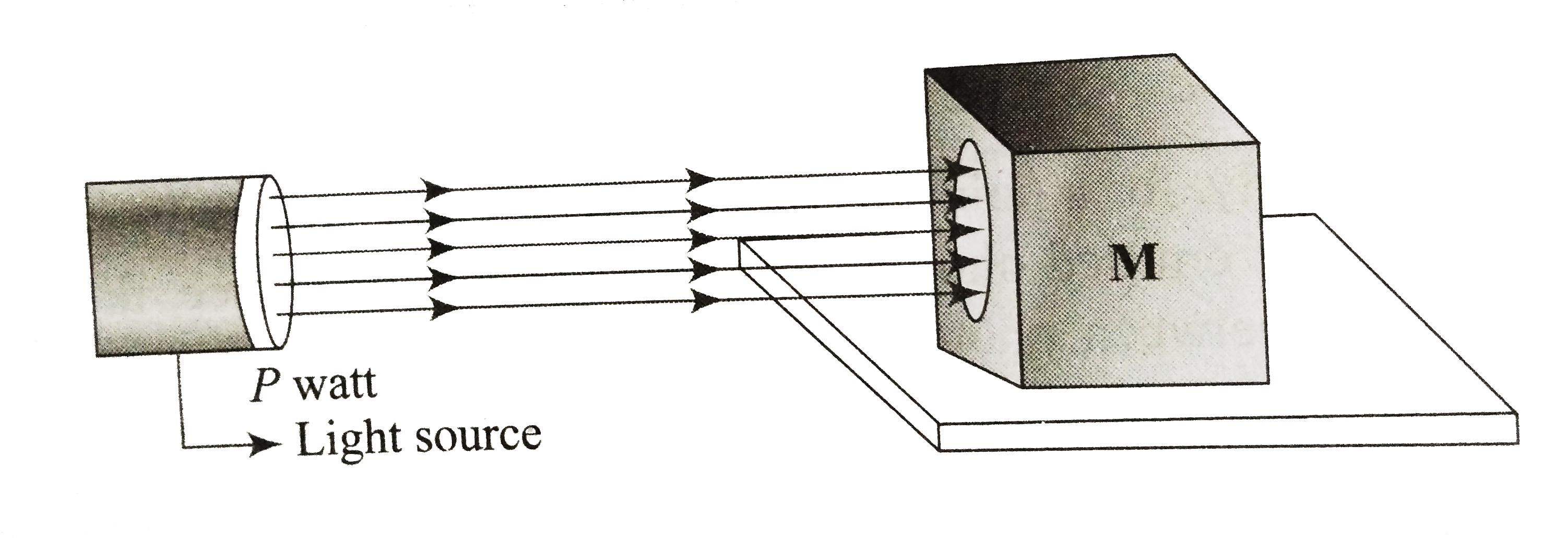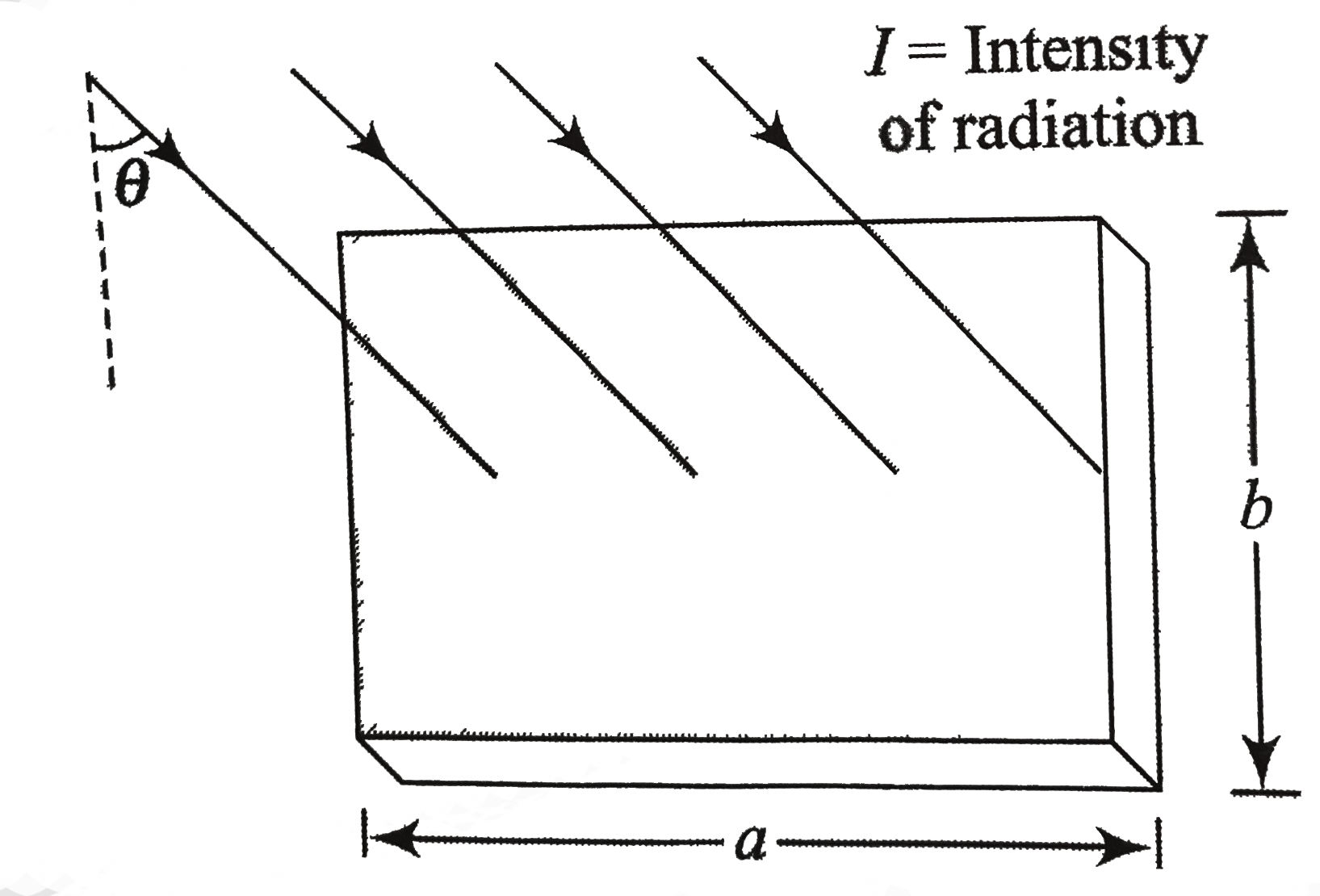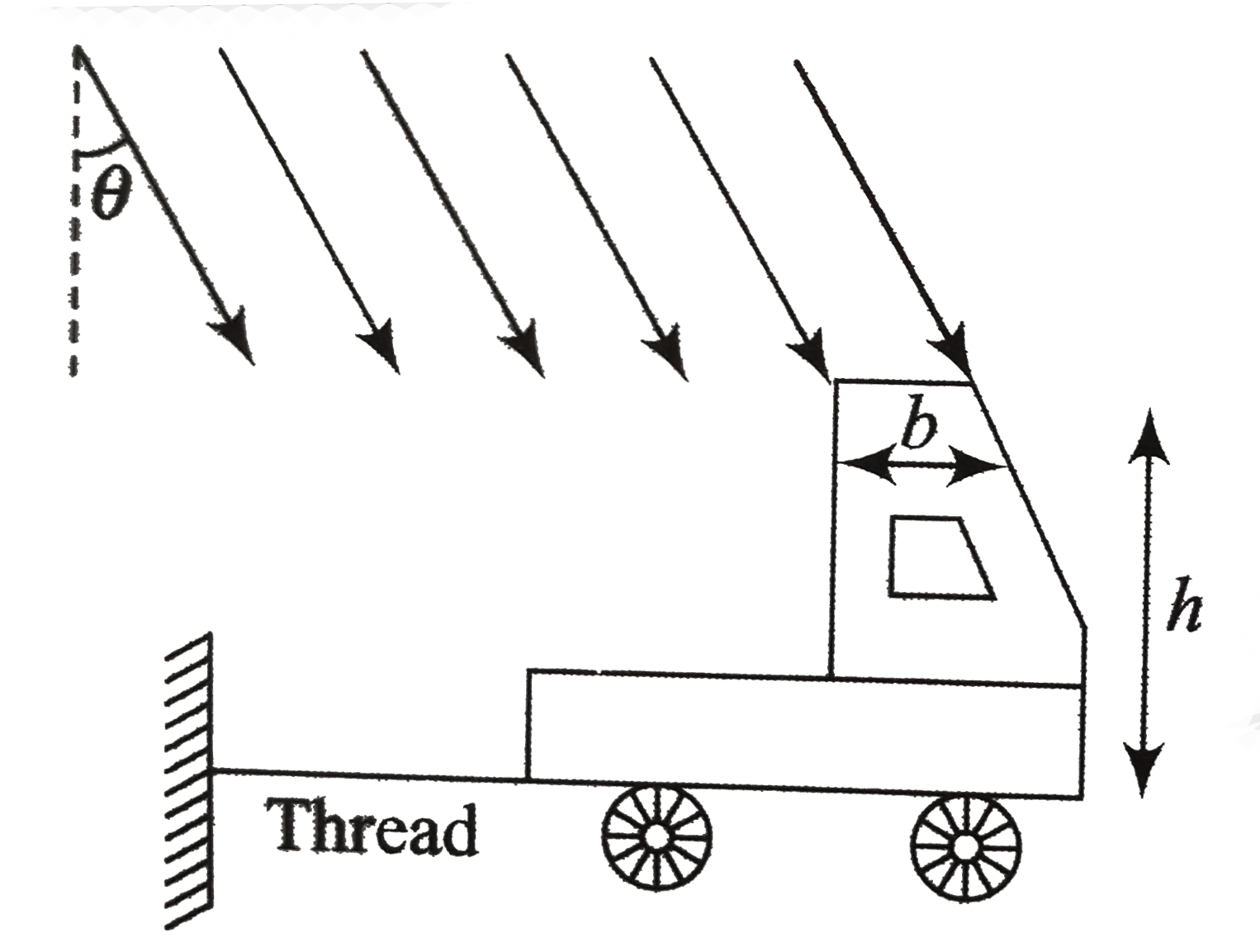Complete Solutions to Illustration of chapter PHOTOELECTRIC EFFECT of Class 12 book with complete answers and questions
| Class 12 | PHYSICS |
| Chapter | PHOTOELECTRIC EFFECT |
| CENGAGE PHYSICS | Illustration |
| Number Of Questions | 31 |
| Academic Year | 2023-24 |
Calculate the number of photons emitted in 10 h by a 60 W sodium lamp `(lamda=5893A)`.
View SolutionThe sun delivers about `1.4kW m^(-2)` of electromagnetic flux to the earth's surface. Calculate
A. the total power incident on a roof of dimensions `8mxx20`m.
B. the solar energy in joules incident on the roof in 1h.
C.the radiation pressure and force assuming the roof to be a perfect absorber.
View SolutionA bulb lamp emits light of mean wavelength of `4500A`. The lamp is rated at `150W` and `8%` of the energy appears as emitted light. How many photons are emitted by the lamp per second?
View SolutionThe sun gives light at the rate of `1400Wm^(-2)` of area perpendicular to the direction of light. Assume `lamda(sunlight)=6000A`. Calculate
A.the number of photons per second arriving at `1 m^2` area at earth.
B. the number of photons emitted from the sun per second assuming the average radius of the Earth's orbit is `1.49xx10^(11)` m.
View Solution
A source of light of power P is shown in Fig. 3.6. Find the force on the block placed in the path of the light rays. The surface of body on which the light beam is incident is having a reflection coefficient `a_r=0.7` and absorption coefficient `a_a=0.3`.

View SolutionA plate of mass 10g is in equilibrium in air due to the force exerted by a light beam on the plate. Calculate power of the beam. Assume that the plate is perfectly absorbing.

View SolutionA radiation of wavelength 200nm is propagating in the form of a parallel surface. The power of the beam is 5mW and its cross-sectional area is 1.0`mm^(2)`. Find the pressure exerted by radiation on the metallic surface if the radiation is completely reflected.
View SolutionA. How many photons of a tradiation of wavelength `lamda=5xx10^(-7)` m must fall per second on a blackened plate in order to produce a force of `6.62xx10^(-5)`N?
B. At what rate will the temperature of plate rise if its mass is 19.86kg and specific heat is equal to `2500J(kgK^(-1))`?
View SolutionA monochromatic beam of light `(lamda=4900A)` incident normally upon a surface produces a pressure of `5xx10^(-7)Nm^(-2)` on it. Assume that `25%` of the light incident in reflected and the rest absorbed. Find the number of photons falling per second on a unit area of thin surface
View Solution
A plank of mass m is lying on a rough suface having coeffient of frinction as `mu` is situation as shown in fig Find the acceleration of the plank assuming that it slips and the surface of body exposed to radiaton is black body.
View SolutionIn the path of a uniform light beam of large cross-sectional area and intensity I. a solid sphere of redius R which is perfectly reflecting is placed . Find the force exerted on this sphere due to the light beam.
View Solution
A toy truck has dimensions as shown in fig. and its width, normal to the plane of this paper, is d. The sun rays are incident on it as shiwn in the figure. If intensity of rays is I and all surfaces of truck are perfectly black, calculate tension in the thread used to keep the truck stationary. Neglect friction.
View SolutionWhat is the de Broglie wavelength of the wave associated with an electron that has been accelerated through a potential difference of 50.0 V?
View SolutionWhat voltage must be applied to an elect-non microscope to produce electrons of wavelength `0.4A`?
View SolutionAn electron and a photon have the same de Broglie wavelength. Which one of these has higher kinetic energy?
View SolutionA photon and an electron have the same de Broglie wavelength. Which has greater total energy? Explain
View SolutionThe wavelength of light from the spectral emission line of sodium is 589 nm. Find the kinetic energy at which (a) an electron, and (b) a neutron, would have the same de Broglie wavelength.
View SolutionA. For what kinetic energy of neutron will the associated de Broglie wavelength be `1.40xx10^(-10)m`?
B. Also, find the de Broglie wavelength of a neutron, in thermal equilibrium with matter, having an average kinetic energy of `((3)/(2))` kT at `300 K`. Given the mass of neutron`=1:66xx10^(-27)kg` and `k=1.38xx10^(-23)Jkg^(-1)`.`
View SolutionAn electron microscope uses electrons accelerated by a voltage of 50 kV. Determine the de Broglie wavelength associated with the electrons. If other factors (such as numerical aperture, etc.) are taken to be roughly the same, how does the resolving power of an electron microscope compare with that of an optical microscope which uses yellow light?
View SolutionDetermine the de Broglie wavelength of a proton, whose kinetice energy is equal to the rest of the mass energy of an electron. Given that the mass of an electron is `9xx10^(-31)` kg and the mass of a proton is `1837` times as that of the electron.
View SolutionThe extent of localization of a particle is determined roughly by its de Broglie wave. If an electron is localized within the nucleus (of size about `10^(-14)`m) of an atom, what is its energy? Compare this energy with the typical binding energies (of the order of a few MeV) in a nucleus and hence argue why electrons cannot reside in a nucleus.
View SolutionFind the ratio of de Broglie wavelength of molecules of hydrogen and helium which are at temperatures `27^circ` and `127^circC`, respectively.
View SolutionWhat is the energy ( in eV) of a photon of walelength `12400A`?
View SolutionWill photoelectrons be emitted from a copper surface, of work function `4.4 eV`, when illuminated by a visible light?
View SolutionA mercury lamp is a convenient source for studying frequency dependence of photoelectric emission, since it gives a number of spectral lines ranging from the UV to the end of the red visible spectrum. In our experiment with rubidium photocell, the following lines from a mercury source were used: `lambda_(1)=3650A^(@), lambda_(2)=4047A^(@), lambda_(3)=4358A^(@), lambda_(4)=5461A^(@), lambda_(5)=6907A^(@)` The stopping voltages, respectively were measured to be:
`V_(01)=1.28V, V_(02)=0.95V, V_(03)=0.74V, V_(04)=0.16V, V_(05)=0V`.
(a) Determine the value of Planck's constant h.
(b) Estimate the threshold frequency and work function for the material.
View SolutionPhotoelectric threshold of silver is `lamda=3800A`. Ultraviolet light of `lamda=2600A` is incident of a silver surface. Calculate:
a. the value of work function in joule and in eV.
b. maximum kinetic energy of the emitted photoelectrons.
c. the maximum velocity of the photoelectrons.
(Mass of the electrons`=9.11xx10^(-31)`).
View SolutionThe stopping potential for photoelectrons emitted from a surface illuminated by light wavelength of `5893A` is `0.36 V`. Calculate the maximum kinetic energy of photoelectrons, the work function of the surface, and the threshold frequency.
View SolutionWhen a surface is irradiated with light of wavelength `4950 A`, a photoncurrent appears which vanishes if a retarding potential greater than 0.6 V is applied across the photo tube. When a different source of light is used, it is found that the critical retarding potential is changed to 1.1 V. Find the work function of the emitting surface and the wavelength of the second source. If the photoelectrons (after emission from the surface) are subjected to a magnetic field of 10 T, what chages will be observed in the above two retarding potentials?
View SolutionCalculate the valocity of a photoelectron if the work function of the target material is `1.24eV` and the wavelength of incident light is `4.36xx10^(-7)`m. What retarding potentia is necessary to stop the emission of the electrons?
View SolutionA beam of light has three wavelengths `4144 Å`, `4972 Å` and `6216 Å` with a total instensity of `3.6 xx 10^(-3) Wm^(-2)` equally distributed amongst the three wavelengths. The beam falls normally on an area `1.0 cm^2` of a clean metallic surface of work function 2.3 eV. Assume that there is no loss of light by reflection and that each energetically capable photon ejects on electron. Calculate the number of photo electrons liberated in two seconds.
View SolutionA photocell is operating in saturation mode with a photocurrent `4.8 mA` when a monochromatic radiation of wavelength `3000 Å`and power of `1mW` is incident. When another monochromatic radiation of wavelength `1650 Å` and power `5mW` is incident, it is observed that maximum velocity of photoelectron increases to two times. Assuming efficiency of photoelectron generation per incident photon to be same for both the cases, calculate.
(a) the threshold wavelength for the cell
(b) the saturation current in second case
(c ) the efficiency of photoelectron generation per incident photon.
View Solution
Illustration questions and complete solutions for chapter PHOTOELECTRIC EFFECT of CENGAGE PHYSICS (ENGLISH) of Class 12